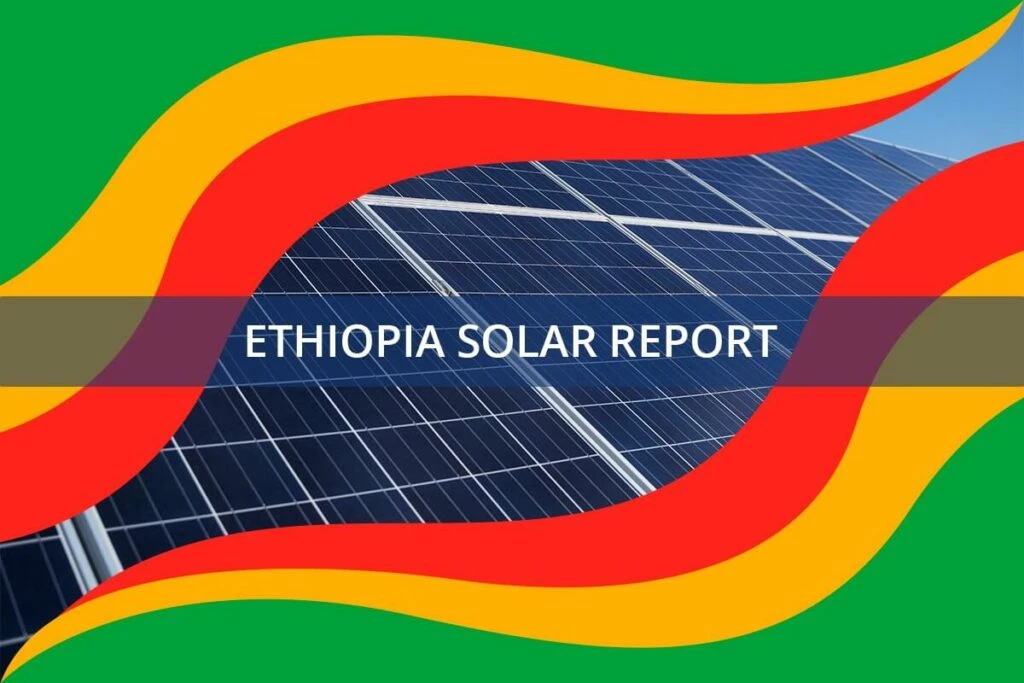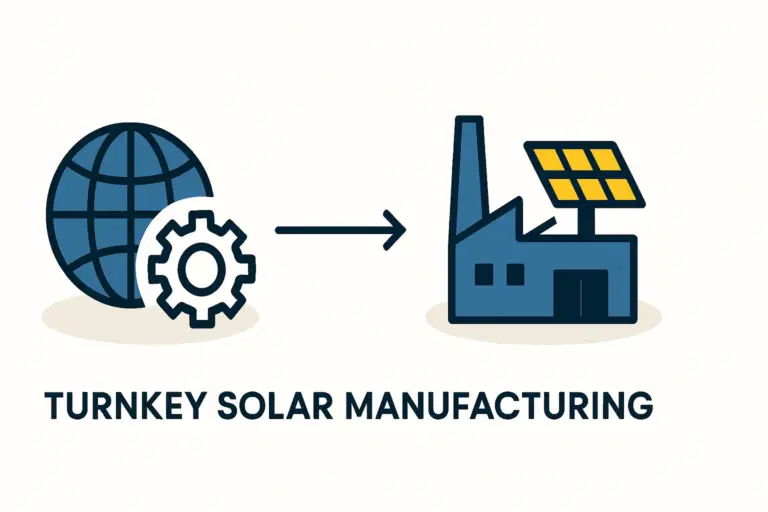For the international investor or established entrepreneur, identifying the next high-growth manufacturing frontier is a constant pursuit. While many look to traditional hubs, a significant opportunity is quietly materializing in the Horn of Africa. Ethiopia, through strategic industrial policy and geographic advantage, is positioning itself as a powerful base for export-oriented manufacturing, particularly in the renewable energy sector.
This blueprint outlines a strategy for establishing a 100+ megawatt (MW) solar module production facility within the Adama Industrial Park. It focuses specifically on an export model targeting the vast and growing markets of the East African Community (EAC) and beyond. This guide is designed for business professionals who recognize the potential but need a structured path through the technical and logistical landscape.
The Strategic Rationale: Why Ethiopia for Solar Manufacturing?
Locating a capital-intensive facility hinges on a convergence of market access, government support, and operational advantages. On all these fronts, Ethiopia presents a compelling case.
Unparalleled Market Access
A facility in Ethiopia is not merely serving a domestic market; it is a gateway to several of the world’s most dynamic economic blocs.
- East African Community (EAC): Direct access to a common market of over 177 million people with rapidly growing energy needs.
- COMESA: Preferential access to the Common Market for Eastern and Southern Africa, encompassing over 500 million potential customers.
- AfCFTA: The African Continental Free Trade Area agreement positions an Ethiopian base for continent-wide distribution as trade barriers diminish.
- Global Export Agreements: Crucially, Ethiopia benefits from duty-free and quota-free access to lucrative international markets, including the European Union under the ‘Everything But Arms’ (EBA) agreement and the United States via the African Growth and Opportunity Act (AGOA).
This unique blend of regional and global market access allows for a diversified export strategy that reduces reliance on any single market.
Adama Industrial Park: A World-Class Manufacturing Ecosystem
Choosing the right location within Ethiopia is as critical as choosing the country itself. The Adama Industrial Park (AIP), strategically located near the capital, Addis Ababa, is specifically designed for international-standard manufacturing.

The park overcomes many common challenges of setting up operations in emerging markets by providing:
- Reliable Infrastructure: The park guarantees stable, high-quality power and water utilities—non-negotiable for sensitive manufacturing processes like solar module production.
- Logistical Efficiency: Its proximity to the Ethio-Djibouti railway and expressway ensures a streamlined corridor for importing raw materials and exporting finished modules via the Port of Djibouti.
- Fiscal Incentives: The government offers a comprehensive package for businesses within the park, including corporate income tax holidays of up to 10 years, duty-free importation of capital goods and machinery, and an 8-year exemption on dividend taxes.
- ‘One-Stop-Shop’ Services: A dedicated government office within the park handles all administrative needs, from business registration and licensing to customs clearance, significantly reducing bureaucratic friction.
These factors create a controlled, predictable environment, allowing management to focus on production excellence rather than administrative hurdles. The physical infrastructure is also critical. Understanding the specific solar factory building requirements for climate control and workflow is a key first step in adapting a facility within the park.
Blueprint for a 100+ MW Turnkey Facility: Key Considerations
An export-oriented operation demands a focus on scale, technology, and quality from day one. A capacity of 100+ MW is the threshold for achieving the economies of scale needed to compete internationally. Drawing on experience from numerous J.v.G. turnkey projects, we’ve identified several critical considerations.
Production Capacity and Technology Selection
To serve international markets, the production line must incorporate current and future-proofed technology.
- Cell Technology: The line should be specified to handle large-format cells, such as M10 and G12, which are the current industry standard for high-efficiency modules.
- Module Technology: Focusing on PERC (Passivated Emitter and Rear Cell), with a clear upgrade path to TOPCon (Tunnel Oxide Passivated Contact), ensures a competitive product. For the high-irradiation and often harsh climates of Africa and the Middle East, producing durable glass-glass modules offers a significant market advantage.

Investment and Financial Planning
A clear financial plan is the bedrock of the project. Total investment covers several key areas: machinery, building adaptation, and working capital for the initial Bill of Materials (BOM) and operational ramp-up. A detailed feasibility study is essential to secure financing and guide decision-making. For investors new to this sector, examining the typical components of the total solar panel manufacturing plant cost provides a comprehensive overview.
Quality Assurance and International Certification
Exporting solar modules is impossible without adherence to global quality standards. A turnkey setup must be designed from the ground up to achieve:
- IEC 61215 (Design Qualification and Type Approval): Certifies the performance and reliability of the module design.
- IEC 61730 (Module Safety Qualification): Certifies the module’s safety for installers and end-users.
- ISO 9001: A foundational quality management system that ensures consistent processes and continuous improvement.
Achieving these certifications is not an afterthought; it is a core project objective that influences machine selection, process design, and staff training.
Workforce Development and Training
While Ethiopia has a large and available workforce, developing specialized skills in solar manufacturing is essential. A critical component of a turnkey solution is a comprehensive training program. This involves sending key local engineers and technicians to Europe for intensive training on the specific equipment, followed by on-site training by experienced German engineers during the commissioning and ramp-up phases. This knowledge transfer is essential for long-term operational autonomy and success.
Frequently Asked Questions (FAQ)
What is the typical timeline for establishing a 100 MW facility?
With a structured turnkey approach, a project of this scale can move from contract signing to the first certified module production in approximately 12 to 15 months. This includes machinery manufacturing, shipping, installation, commissioning, and staff training.
Why is a turnkey solution recommended for new market entrants?
A turnkey partner like J.v.G. Technology GmbH provides a single point of responsibility for the entire technical scope—from factory layout and machine selection to process integration and achieving certification. This de-risks the project for investors without prior solar manufacturing experience, ensuring the facility is built to international standards from day one.
How is the supply chain for raw materials managed?
The Bill of Materials (BOM)—including solar cells, glass, encapsulant, and frames—is typically sourced from established global suppliers in Asia and Europe. The logistics are managed via sea freight to the Port of Djibouti and then by rail or road to Adama. Establishing reliable supply chains is a key part of the initial project planning phase.
What kind of local talent is required?
The facility will require a mix of talent. Management and engineering roles can be filled by experienced professionals, who will undergo specialized training. The majority of the operator workforce can be recruited locally and trained on specific tasks. A strong local plant manager is critical to the project’s long-term success.
Conclusion: A Calculated Entry into a High-Growth Sector
Establishing a 100+ MW solar module factory in Ethiopia’s Adama Industrial Park is a strategic move to capitalize on the immense energy demand of Africa and leverage favorable trade agreements for global export. The combination of a pro-business industrial park, significant tax incentives, and streamlined logistics creates a uniquely competitive environment.
While a substantial undertaking, the challenge is far from insurmountable. For entrepreneurs and corporations ready to enter this space, success hinges on meticulous planning, adopting world-class technology, and partnering with experienced specialists who can provide a clear, structured path from concept to full-scale, certified production.





